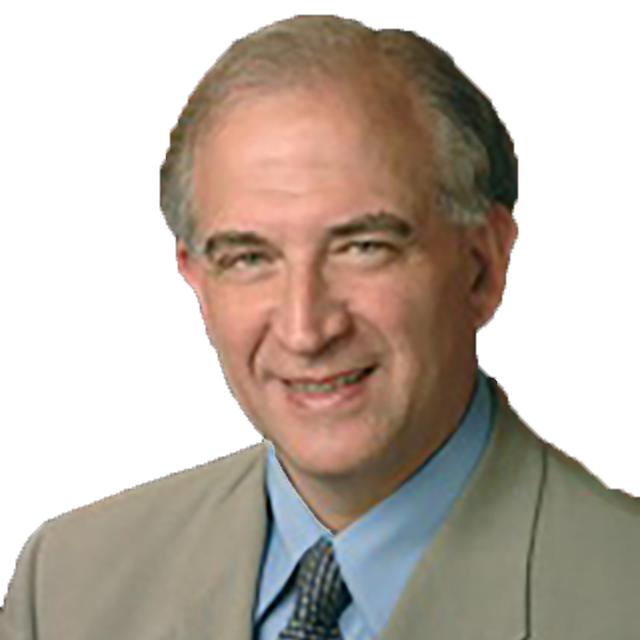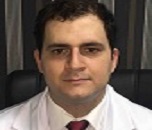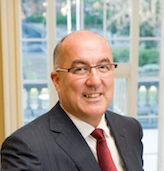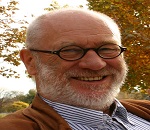Theme: Advancements and breakthroughs in the fields of Vascular Dementia and Neurodegenerative Diseases
Vascular Dementia Congress 2022
Conference Series LLC LTD welcomes each one of the members from everyplace throughout the planet to travel to the insanity gathering that is command amid July 25-26 Rome, Italy. The principle Theme of our meeting is "Advancements and breakthroughs in the fields of Vascular Dementia and Neurodegenerative Diseases" that covers intensive form of essentially important sessions. This meeting flow regarding enhancements within the field of insanity and about the new treatment techniques that square measure contrived by researchers to treat completely different maladies in less hard-to-please approach. This meeting goes concerning as a best stage for participants to search out concerning this pattern in insanity innovative work.
Vascular Dementia Congress 2022 can target the foremost recent and energizing developments in each facet of insanity think about that offers a noteworthy open door for agents over the world to fulfil, organize, and see new logical advancements. The 2 days gathering incorporates workshops, symposiums and exceptional keynote sessions semiconductor diode by notable and eminent speakers WHO exceed expectations within the field of insanity. This Worldwide insanity Meeting likewise energizes the dynamic support of young understudies, forthcoming specialists and growing researchers as we have a tendency to square measure facilitating Poster Award Competition and Young analysis Forum at the gathering setting.
Alzheimer's is the most common form of dementia, a general term for memory loss and other cognitive abilities serious enough to interfere with daily life. Alzheimer's disease accounts for 60 to 80 percent of dementia cases. Alzheimer's is the most common form of dementia, a general term for memory loss and other cognitive abilities serious enough to interfere with daily life. Alzheimer's disease accounts for 60 to 80 percent of dementia cases. Alzheimer's is not a normal part of aging.
Clinical Studies of Alzheimer’s
Alzheimer’s disease Pathophysiology and Disease Mechanisms
Vascular dementia occurs when vessels that supply blood to the brain become blocked or narrowed. Strokes take place when the supply of blood carrying oxygen to the brain is suddenly cut off. However, not all people with stroke will develop vascular dementia.
Young onset Dementia
Multi-infarct Dementia
Mixed Dementia
Advances in Vascular Dementia therapy
People with vascular dementia have different mental element shortfalls that incorporate every memory hindrance, that influences the adaptability to discover new data or review data already learned, and one or extra of the ensuing side effects apraxia, agnosia, or official brokenness to such an extent that the mental element shortages adversely affect social or action working with a major decrease in past abilities.
Music therapy in Dementia
Clinical features of dementia
Dementia Therapeutic intervention
Early discovery and exact analysis are critical, as vascular dementia is at any rate halfway preventable. Ischemic changes in the cerebrum are irreversible; however the patient with vascular dementia can exhibit times of solidness or even gentle change. Since stroke is a basic piece of vascular dementia, the objective is to forestall new strokes. This is endeavoured through decrease of stroke chance components, for example, hypertension, high blood lipid levels, atrial fibrillation, or diabetes mellitus
Psychopharmacological treatment
Primary mental health care and nursing
Advanced drugs for dementia
Cognitive behavioral therapy
Family therapy in nursing
Alzheimer’s dementia (AD) is increasingly being recognized as one of the most important medical and social problems in older people in industrialized and non-industrialized nations. To date, only symptomatic treatments exist for this disease, all trying to counterbalance the neurotransmitter disturbance. Three cholinesterase inhibitors (CIs) are currently available and have been approved for the treatment of mild to moderate AD.
Neurological disorders are diseases of the central and peripheral nervous system. In other words, the brain, spinal cord, cranial nerves, peripheral nerves, nerve roots, autonomic nervous system, neuromuscular junction, and muscles. These disorders include epilepsy, Alzheimer disease and other dementias, cerebrovascular diseases including stroke, migraine and other headache disorders, multiple sclerosis, Parkinson's disease, neuroinfections, brain tumours, traumatic disorders of the nervous system due to head trauma, and neurological disorders as a result of malnutrition.
Research in stroke recovery and rehabilitation has largely focused on ischemic stroke, but given the stark differences in the pathophysiology between ischemic and hemorrhagic stroke, it is possible that strategies to rehabilitate the brain in distinct stroke subtypes will be different. A stroke is when an area of the brain is damaged from a lack of oxygen. Ischemic stroke is when there is a blockage, whereas hemorrhagic stroke is when there is a bleed in the brain is when an area of the brain is starved of oxygen and brain cells in that area of the brain begin to die.
Intracerebral hemorrhage
Subarachnoid hemorrhage
Arteriovenous malformation
Impaired motor function
Malignant (cancerous) tumors are typically rapidly growing and aggressive. Benign tumors are typically slow- growing and less aggressive. Primary brain tumors can be malignant, intermediate (between malignant and benign), or benign. Malignant primary brain tumors are dangerous because of their tendency to invade the brain, but they rarely spread outside the brain. Metastatic brain tumors are almost always malignant.
The abnormal cell growth and sudden reactions taking place from central nervous system results in brain tumour. Neuro-oncology is the study of brain and spinal cord neoplasms, which are very dangerous and life-threatening. Astrocytoma, glioblastoma, glioma, multiforme, ependymoma, pontine glioma, and brain stem tumours are some of the examples. Surgery may in some cases be the medicinal but malignant brain cancers turn to regenerate and emerge from absolution easily, especially highly malignant cases.
Neuro-oncology is a broad and rapidly evolving field comprising portions of neurology, neurologic surgery, pediatrics, medical oncology, radiation oncology, neuroradiology, neuropathology, cancer rehabilitation, and palliative care. Neuro-oncology covers diagnosis and management of primary and metastatic tumors of the central nervous system (CNS) and complications of systemic cancers or cancer treatments. The goal of this 2-part special report is to provide an overview of epidemiology, presentation, diagnostic evaluation, and management for the most common CNS tumors. Here, we focus on medical and surgical management of brain tumors.
Astrocytic tumours
Oligodendroglial tumours
Chemotherapy
Immunotherapy
Neuropsychiatry is an important branch of medical science. Considering the clinical aspects and its close association with behavioral neurology, Neuropsychiatry journal aims at updating researchers, clinicians and academicians with most recent information on every aspect of neuropsychiatry. The journal provides a platform for exchanging and sharing the latest developments in the relevant area.
Neuropsychiatry, area of science and medicine focused on the integrated study of psychiatric and neurological conditions and on the treatment of individuals with neurologically based disorders. In science, neuropsychiatry supports the field of neuroscience and is used to better understand the neurological underpinnings of psychiatric and neurologic disorders and to examine the treatment and care of persons with neurological conditions, particularly those that affect behaviour.
Psychoneuroimmunology
Losing a loved one, getting fired from a job, going through a divorce, and other difficult situations can lead a person to feel sad, lonely and scared. These feelings are normal reactions to life's stressors. Most people feel low and sad at times. However, in the case of individuals who are diagnosed with depression as a psychiatric disorder, the manifestations of the low mood are much more severe and they tend to persist. Depression occurs more often in women than men. Some differences in the manner in which the depressed mood manifests has been found based on sex and age. In men it manifests often as tiredness, irritability and anger. They may show more reckless behavior and abuse drugs and alcohol. They also tend to not recognize that they are depressed and fail to seek help. In women depression tends to manifest as sadness, worthlessness, and guilt. In younger children depression is more likely to manifest as school refusal, anxiety when separated from parents, and worry about parents dying. Depressed teenagers tend to be irritable, sulky, and get into trouble in school. They also frequently have co-morbid anxiety, eating disorders, or substance abuse. In older adults depression may manifest more subtly as they tend to be less likely to admit to feelings of sadness or grief and medical illnesses which are more common in this population also contributes or causes the depression.
Cholinesterase inhibitors such as donepezil (Aricept), galantamine (Razadyne), and rivastigmine (Exelon) slow the breakdown of a brain chemical involved in memory and judgment. To diagnose the cause of the dementia, the doctor must recognize the pattern of the loss of skills and function and determine what a person is still able to do. More recently, biomarkers have become available to make a more accurate diagnosis of Alzheimer's disease.
Alzheimer's disease (AD) is the most common form of dementia, with no disease-modifying treatment yet available. Early detection of patients at risk of developing AD is of central importance. Blood-based genetic signatures can serve as early detection and as population-based screening tools. Alzheimer’s disease (AD) is a serious degenerative brain disease and the most common cause of dementia. The current available drugs for AD provide symptomatic benefit, but there is no effective drug to cure the disease. The emergence of large-scale genomic, pharmacological data provides new opportunities for drug discovery and drug repositioning as a promising strategy in searching novel drug for AD.
Alzheimer’s disease is a progressive neurodegenerative disorder characterized by deposition of amyloid plaques composed of aggregated amyloid beta plaques, and neurofibrillary tangles composed of hyperphosphorylated tau that leads to synaptic defects resulting in neuritic dystrophy and neuronal death.
Neurodegenerative diseases cause your brain and nerves to deteriorate over time. They can change your personality and cause confusion. They can also destroy your brain’s tissue and nerves. Some brain diseases, such as Alzheimer’s disease, may develop as you age. They can slowly impair your memory and thought processes. Other diseases, such as Tay-Sachs disease, are genetic and begin at an early age.
The risk of being affected by a neurodegenerative disease increases dramatically with age. More Americans living longer means more people may be affected by neurodegenerative diseases in coming decades. This situation creates a critical need to improve our understanding of what causes neurodegenerative diseases and develop new approaches for treatment and prevention.
Amyotrophic lateral sclerosis (ALS)
Lewy body disease
Spinal muscular atrophy
Huntington’s disease
Motor neuron disease
Neurosurgery or neurological careful treatment is the therapeutic strong point focused on the aversion, examination, and recovery of issues which influence any piece of the on edge gadget alongside brain, spinal twine, fringe nerves, and additional cranial cerebrovascular gadget. They aid the visualization of intra cerebral drain.
Stereotactic Neurosurgery
Spinal Neurosurgery
Neuropharmacology is the study of how drugs affect cellular function in the nervous system, and the neural components through which they impact behaviour. There are two principle parts of neuropharmacology: social and atomic. Conduct neuropharmacology centers around the investigation of how medications influence human conduct (neuropsychopharmacology), including the investigation of how medication reliance and fixation influence the human brain. Molecular neuropharmacology involves the study of neurons and their neurochemical interactions, with the general objective of creating drugs that affects the neurological capacity. Molecular neuropharmacology involves the study of neurons and their neurochemical interactions, since both are worried about the collaborations of synapses, neuropeptides, neurohormones, neuromodulators, catalysts, second errand people, co-transporters and peripheral nervous systems. Examining these associations, specialists are creating medications to treat a wide range of neurological issue, including torment, neurodegenerative infections, for example, Parkinson's malady and Alzheimer's sickness, mental disarranges, habit, and numerous others.
Neuroscience and neuropharmacology
Neurochemical interaction
Advance research in neuropharmacology
A psychiatric disorder may also cause physical symptoms, such as a headache, back pain, or stomach pain. If you’re being evaluated for a psychiatric disorder, be sure to tell your doctor about any physical symptoms you’re having, including unexplained aches and pains. Mental health nursing or psychiatry nursing is the speciality of nursing that cares for people of all ages with mental distress or illness such as schizophrenia, bipolar disorder, depression, psychosis it is a stressful and emotionally draining job as well as a rewarding job for once career.
Depression
Personality disorders
Schizophrenia
Eating disorders
Addictive behaviors
Alzheimer’s disease Biomarkers, with emphasis on cerebrospinal fluid biomarkers and neuroimaging. Mild Cognitive Impairment (MCI) of Neuroimaging-biomarkers allow an early diagnosis in preclinical stages of Alzheimer’s disease. Biomarker changes in patients with late-onset AD, including findings from studies using structural and functional magnetic resonance imaging (MRI), advanced MRI techniques (diffusion tensor imaging, magnetic resonance spectroscopy, perfusion), positron emission tomography with fluorodeoxyglucose, amyloid tracers, and other neurochemical tracers, and CSF protein levels. The dynamic measures of these imaging biomarkers are used to predict the disease progression in the early stages and improve the assessment of therapeutic efficacy in these diseases in future clinical trials.
Neurogenesis & Neuron Regeneration
Neuropathology
Structural and functional biomarkers
It is a branch of Medical Sciences majorly deals with Neuro tumors. Deals with Studies related to Brain and Spinal cord neoplasms. Neuro-oncology and Pediatric Neuro-oncology are the two different Concepts that differentiate the determining methodology of Neuro tumors. Neuro-oncology mainly includes especially related topics like Radiation therapy, Neurosurgery, Neuroimaging, social, Psychological, Neuropathology and psychiatric aspects.
Spine Cancer and Spine Cancer Treatment
Glioblastoma
Meningioma
Malignant Brain Cancers and Brain Metastasis
Astrocytoma
Astrocytoma
Neurotoxicity
Risk Factors
Radiation Therapy And Chemotherapy
To evaluate the safety and efficacy of an oral investigational drug in individuals who are asymptomatic and at-risk for Alzheimer's disease and investigating the effect of crenezumab infusion on Alzheimer's disease progression in individuals with prodromal or mild Alzheimer's disease. Presently the clinical trials and studies are mainly concentrates on Alzheimer’s Disease & Down syndrome, aging to have the best chance of changing the outlook for people with dementia promising ideas must be driven through the development process and into clinical trials in people as quickly as possible.
Clinical trials are part of the cancer research process. Clinical trials are done to find out if new cancer treatments are safe and effective or better than the standard treatment. For some patients, taking part in a clinical trial may be the best treatment choice.
Targeting Amyloid
Ramping Up the Immune System
Treatment trials
Doctors can't analyse Alzheimer's Disease until after death, when they can nearly inspect the brain under a magnifying instrument. However, they can utilize tests to decide out different conditions that may cause similar symptoms. Early, exact finding is advantageous for a few reasons. Starting treatment ahead of schedule in the illness procedure may help protect day by day working for quite a while, even though the hidden Alzheimer's procedure can't be ceased or switched. Alzheimer's dementia comes about because of the dynamic misfortune (degeneration) of brain cells. This movement may appear in an assortment of courses in brain scans. At present researchers are exploring a few ailment markers and demonstrative tests, for example, qualities, infection related proteins and imaging methods, which may precisely and dependably show whether you have Alzheimer's dementia or not. whatever, right now more research on these tests is important for future
Neuropsychological testing
Treatments for Behavior
Precision Medicine for Alzheimer Disease
Molecular biological research has considerably deepened our understanding of the pathophysiological basis of Alzheimer's dementia. Considerable progress has been made in our understanding of the genetics and molecular biology of dementia. Some genetic risk factors have been identified so far, but only a small proportion of AD cases can be explained by specific gene mutations. Genes may be related to disease in two ways: through autosomal-dominant mutations, in themselves sufficient to cause the disease alternatively, gene variations (polymorphisms) may indirectly increase disease risk without being sufficient in themselves to cause the disorder.
Molecular Genetics of Frontotemporal Dementia
Molecular Genetics of Neurodegenerative Dementias
Human stem cell models of dementia
Fixing Genetic risk for Alzheimer’s
Hundreds of millions of people worldwide are affected by neurological disorders. More than 6 million people die because of stroke each year; over 80% of these deaths take place in low- and middle-income countries. More than 50 million people have epilepsy worldwide. It is estimated that there are globally 47.5 million people with dementia with 7.7 million new cases every year - Alzheimer's disease is the most common cause of dementia and may contribute to 60–70% of cases. The prevalence of migraine is more than 10% worldwide.
The global Alzheimer’s sickness market value $2.9 billion in 2016 is ready to achieve $14.8 Billon, rising at a Compound Annual rate of growth (CAGR) of seventeen.5%, across the 7 Million by 2026 consistent with world information, a recognized leader in providing business info and analytics Alzheimer's disease is that the commonest style of dementia. The proportions of these with totally different varieties of dementia are often dampened as follows:
Paris is that the capital and most thickly settled town of France, with a district of one zero five sq. kilometers and official calculable population of 2,140,526 residents as of Jan 01st 2019. Since seventeenth century, Paris is one of Europe’s major centers of finance, diplomacy, commerce, fashion, science and the arts. town of Paris is that the center and seat of presidency of the French region or Paris region, that has AN calculable official 2020 population of 12,213,364 or concerning eighteen percentage of the population of France. Paris is in northern central France, in a very north-bending arc of the stream Seine. Paris features a typical Western European oceanic climate. The protection of Paris is especially the responsibility of the Prefecture of Police of Paris, a subdivision of the Ministry of the inside of France. The foremost dear residential streets in Paris in 2018 by average value per area unit were Avenue Montaigne and Rue American state Furstenberg at 18,839 Euros per area unit.
Economy of town of Paris is predicated mostly on services and commerce of the 390,480 enterprises within the town, 80.6 % square measure engaged in commerce, transportation, and various services, 6.5 % in construction and 3.9 % in business. The bulk of Paris salaried workers fill 370,000 businesses services jobs, targeted within the north-western eighth sixteenth, seventeenth arrondissements. Paris was the third-busiest airline destination within the world, with 19.03 million guests behind port and London. Paris is a global capital of fashion since the nineteenth century significantly within the domain of high fashion, covering hand-made to order for personal shoppers.
According to United Nations agency 47.5 million folks have dementedness and each year 7.7 million new cases square measure showing. By 2030 total cases of dementia is projected to be 75.6 million and virtually triple by 2050 to one hundred thirty-five million. Alzheimer’s sickness contributes 60-70 you look after cases in dementia and second commonest condition of dementedness is tube-shaped structure dementia that contributes 2 hundredth of cases everywhere the globe.
Conference Highlights
- Alzheimer’s Disease
- Vascular Dementia
- Dementia Nursing
- Recent Advancement in Treating Dementia
- Neurological Disorders
- Stroke Rehabilitation and Brain Haemorrhage
- Brain Tumor and Neuro oncology
- Neuropsychiatry
- Anxiety & Depression
- Treatment for Dementia
- Bioinformatics Approach for Dementia
- Neurodegenerative Diseases
- Neurology and Neurosurgery
- Neuropharmacology
- Psychiatry Mental health disorders
- Neuroimaging Biomarkers
- Vascular Dementia and Central Nervous System
- Alzheimer’s Clinical Trials and Studies
- Diagnostic Alzheimer
- Molecular Genetics and Biology of Dementia
To share your views and research, please click here to register for the Conference.
To Collaborate Scientific Professionals around the World
| Conference Date | July 25-26, 2022 | ||
| Sponsors & Exhibitors |
|
||
| Speaker Opportunity Closed | |||
| Poster Opportunity Closed | Click Here to View | ||
Useful Links
Special Issues
All accepted abstracts will be published in respective Our International Journals.
Abstracts will be provided with Digital Object Identifier by


















